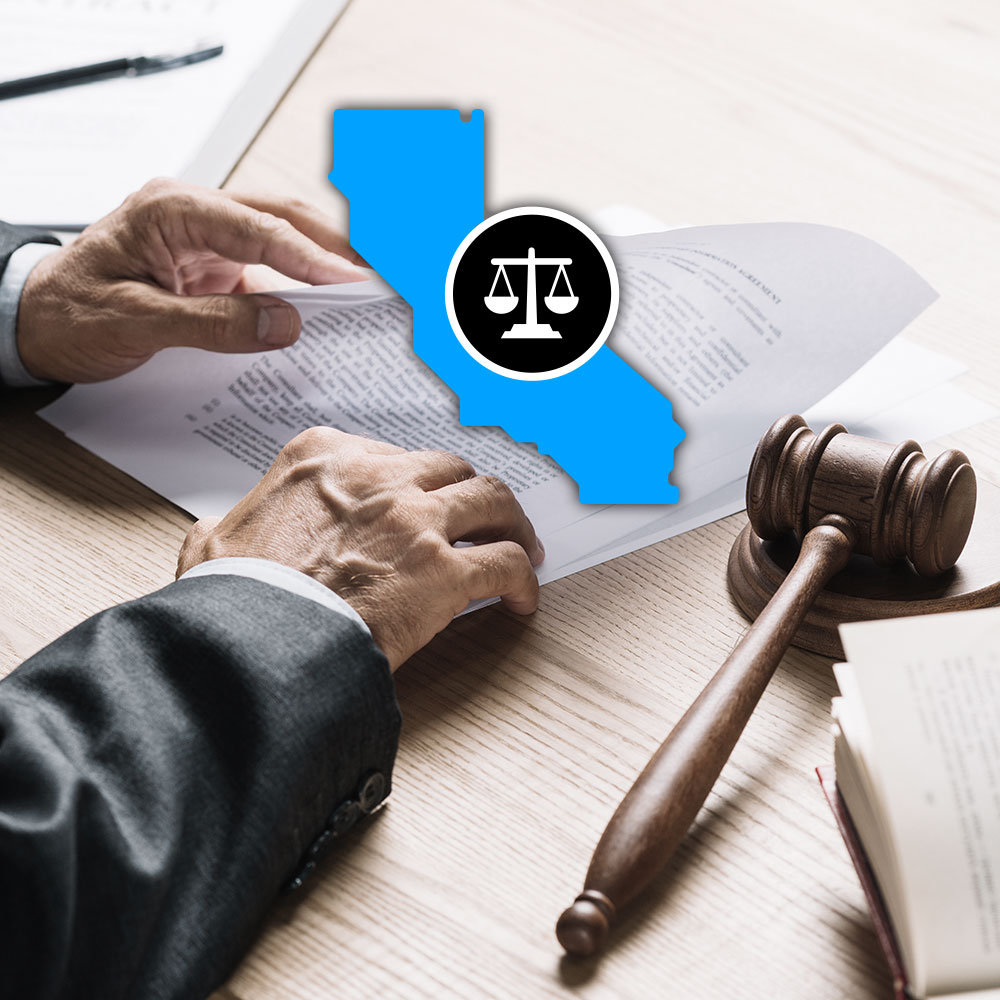As businesses worldwide grapple with the complexities of privacy compliance, especially with new requirements from large tech partners, the need for robust General Data Protection Regulation (GDPR) implementation has never been clearer.
Enforced by member state-based data protection authorities within the EU, the GDPR mandates stringent requirements for businesses handling personal data, irrespective of their geographical location.
With fines for noncompliance reaching new highs, organizations must prioritize GDPR compliance to mitigate legal risks and uphold ethical standards in handling personal data.
Achieving and maintaining GDPR compliance requires meticulous planning and execution. Organizations must implement robust strategies to address the multifaceted nature of GDPR requirements, and to foster a culture of trust and transparency with customers.
Do you need to implement GDPR compliance?
Businesses operating within the EU or handling the personal data of EU residents are directly affected by the GDPR and must adhere to its requirements.
Failure to comply can result in hefty fines, disruption to business operations, and loss of brand reputation, making GDPR compliance implementation a top concern for these organizations.
Secondly, multinational corporations with a global presence and diverse customer bases are also highly impacted by the GDPR. Even if they’re not headquartered in the EU, they may still process the personal data of EU residents, necessitating GDPR compliance measures.
Moreover, businesses in sectors like healthcare, finance, and technology, which often handle sensitive personal information, should be particularly concerned with GDPR implementation due to the heightened risks of data breaches and regulatory scrutiny.
12 steps for implementing GDPR
Navigating GDPR compliance doesn’t have to be overwhelming. These 12 actionable steps are tailored to drive tangible results and streamline ongoing privacy compliance.
From conducting comprehensive data audits to crafting transparent consent mechanisms, each step is designed to translate GDPR requirements into practical strategies. By the end of this 12-step GDPR checklist, you’ll be well-versed in GDPR compliance and ready to implement it in your organization.
1. Compliance assessment
Start by reviewing how personal data is collected, stored, processed, and shared within your organization. Examine all touchpoints where data is collected, whether through online forms, customer interactions, or third-party platforms.
Take stock of where, how, and for how long this data is stored and who has access to it.
Next, identify the scope of GDPR applicability within your company. Determine which parts of your data handling practices fall under GDPR jurisdiction. You’ll need to assess whether you process the personal data of EU residents, regardless of your physical location, as the GDPR’s requirements are extraterritorial.
Consider all data processing activities, from customer interactions to employee records, and assess their alignment with GDPR requirements. This will help you gain clarity on the areas that require attention and prioritize your efforts.
2. Data inventory
A data inventory is a comprehensive record of all the personal data that your company collects, processes, stores, and shares.
It includes details such as:
- types of data collected
- purposes for which it is used
- sources from which it is obtained
- parties with whom it is shared
Having a data inventory will help you gain a clear understanding of the personal data you hold and how it’s processed. This will enable you to assess your data processing activities against GDPR requirements, identify areas of noncompliance risk, and take corrective actions to align with the regulation.
A data inventory helps fulfill data subject rights by providing a centralized repository of data, making it easier to comprehensively respond to data subject requests, including access, rectification, and erasure.
Creating a data inventory isn’t a mandatory requirement under the GDPR, but it’s a valuable practice that helps organizations navigate GDPR requirements more effectively and build consumer trust.
3. Data mapping and risk assessment
Data mapping involves tracing the journey of personal data as it enters and moves through and out of your organization.
Start by documenting the flow of personal data and identifying its sources, storage locations, retention periods, and recipients. This will help you gain a clear understanding of how data is collected, processed, and shared within your company.
Then, conduct a risk assessment to help you identify potential vulnerabilities and threats to personal data. Evaluate factors such as:
- nature of the data collected
- purposes for which it’s processed
- security measures in place
Together, data mapping and risk assessment will make it easier for you to evaluate your data operations, identify potential risks to personal data, and assess the effectiveness of existing data protection measures.
4. Legal basis for data processing
You need to evaluate whether your company’s data processing activities align with one of the legal bases outlined in the GDPR, which are:
- consent
- contract fulfillment
- legal obligation
- vital interests
- public interest
- legitimate interests
To establish this, you’ll need to conduct a thorough review of the purpose and scope of data processing.
Then, you’ll need to update privacy notices/policies to transparently communicate the legal basis for your data processing. These notices should also inform users about their rights and exercising them, and how their data is being used, to foster transparency and trust.
Through careful assessment and transparent communication, you can build trust with customers and stakeholders while navigating the complexities of data processing in accordance with legal requirements.
5. Consent management implementation

According to GDPR standards, user consent must be freely given, specific, informed, and unambiguous. It must also be securely stored and readily available for audits or data subject access requests. As regulations evolve, the ability to signal consent to third parties like Google for compliance purposes also becomes increasingly important.
Two distinct models exist for prior consent: opt in and opt out. The GDPR and many other global laws follow the opt-in approach, requiring explicit consent before data collection and usage. Opt-out models allow data collection without prior consent, but users must have the ability to opt out of data processing for various purposes at any time without access restriction.
Deploying a CMP, such as the Usercentrics CMP, helps to obtain valid consent and efficiently manage consent records and preferences, enabling you to streamline processes and uphold GDPR compliance standards
6. Implement data security practices
You need to implement data security measures such as encryption, access controls, and regular data backups to combat potential threats.
Encryption is a critical layer of protection as it encodes data to prevent unauthorized access. Encrypting sensitive information both in storage and in transit helps to ensure that even if data is intercepted, it remains indecipherable and unusable to unauthorized parties.
Implementing access controls limits who can access certain data within your organization. Assigning permissions based on roles and responsibilities can limit access to sensitive information to only those who require it for their job functions, and thus the risk of it being accessed where and by people it shouldn’t.
Regular data backups to secure offsite locations are also essential to mitigate the risk of data loss or damage. This makes sure that you can recover critical information in the event of a cyberattack, hardware failure, or natural disaster.
7. Facilitate data subject rights
Having procedures in place to enable responses to requests promptly is essential to GDPR compliance. Data subjects have the right to access their personal data held by a company, request corrections if the data is inaccurate, or even request its deletion under certain circumstances.
Individuals also have the right to receive their data in a commonly used and machine-readable format, enabling them to transfer it to another service provider.
Fulfilling individuals’ requests in a timely manner — the GDPR specifies 30 days for fulfillment or initial response if there are circumstances blocking fulfillment — is not only a legal requirement but also a fundamental aspect of building trust and transparency with users.
It demonstrates your commitment to data privacy and respect for individuals’ rights, and helps foster a positive relationship between you and your customers.
8. Prepare a data breach response
A well prepared data breach response plan shows your commitment to protecting user privacy and the security of personal data. It also makes it easy for you to act swiftly and decisively in the event of a breach and reduce the potential for further damage.
The GDPR does have specified timeframes and timeliness requirements to address a breach, and a comprehensive plan enables faster, more thorough responses to limit damage from a breach.
What’s the best way to prepare a data breach response plan? Once you’ve completed your risk assessment, you can develop clear protocols for detecting, notifying about, containing, and mitigating data breaches, to make sure that all stakeholders know their roles and responsibilities when there’s an incident.
Appointing a dedicated data protection officer (DPO) to oversee the data breach response plan is highly recommended. In some instances, it is a legal requirement. The DPO plays a crucial role in ensuring that the response plan is effectively implemented and updated as needed, and provides expertise and guidance throughout the process.
It’s also important to regularly review and update your data breach response plan to reflect changes in your organization’s operations, technologies, and regulatory requirements. This ensures that the plan remains relevant and effective over time and helps minimize the potential impact of data breaches on your business and your customers.
9. Develop GDPR training programs
Developing effective GDPR training programs is essential for instilling a culture of data protection and privacy compliance and making sure that employees know the processes and their responsibilities with regard to data processing and regulatory requirements.
Interactive workshops and simulations are valuable tools for engaging employees and enabling them to apply GDPR principles in practical scenarios. This hands-on approach reinforces their understanding of data protection practices and prepares them to handle real world situations effectively.
Providing regular updates and refresher courses helps to ensure that employees stay informed about any changes to GDPR regulations and can adjust their practices accordingly. This training is not just for new employee onboarding and is important to maintain over time.
Tailoring training programs based on employees’ roles and level of involvement with personal data is another important consideration. Providing in-depth training for those who handle sensitive data regularly, while offering more general awareness training for other staff members, ensures that everyone receives the appropriate level of education.
By illustrating real world scenarios, employees are better equipped to identify and address data protection issues proactively in contexts relevant to their work.
10. Assess the need for a data protection officer
The DPO serves as a point of contact between your company, data subjects, and regulatory authorities concerning data protection matters. They oversee data protection policies and operations, provide guidance on data processing activities, and monitor compliance with data protection laws.
A DPO should possess knowledge of data protection laws and practices, as well as the ability to monitor compliance effectively. If they are not themselves legal counsel, they will liaise with your legal team regularly.
If you’re trying to figure out whether you need a DPO, first consider the scale and nature of your data processing activities. If your company processes large volumes of personal data, especially sensitive data such as health or financial information, or engages in systematic monitoring of individuals, appointing a DPO may be required.
Then, evaluate your company’s structure and activities. If you’re a public authority or carry out activities that require regular and systematic monitoring of individuals on a large scale, appointing a DPO is mandatory under GDPR. Multinational organizations that operate in multiple EU member states may benefit from a centralized DPO to ensure consistent compliance across jurisdictions.
While not mandatory for all companies, having a knowledgeable and dedicated DPO can greatly enhance data protection efforts and ensure compliance with the GDPR and other relevant regulations.
11. Monitoring and continuous improvement
Regular audits of compliance activities enable you to stay on track with new and updated regulations and best practices. It’s not a one-and-done task; rather, it’s an ongoing process that requires diligence and adaptability. With laws like the Digital Markets Act (DMA) drawing from the GDPR and the regulatory landscape constantly evolving, you need to stay informed.
A CMP, such as Usercentrics CMP, offers a significant advantage in this regard. It empowers you to maintain compliance without overwhelming your teams with implementation or maintenance.
As companies’ tech stacks and marketing strategies evolve, so too must their compliance measures. Smaller companies may lack the resources to manually stay updated on regulatory changes. This is where a robust CMP becomes invaluable.
Consumer demands for data privacy are always changing and becoming more informed, necessitating transparency and robust data protection. The expansion of data portability provisions in newer laws amplifies this need, making it easier for consumers to switch to competitors if their privacy concerns are not addressed.
This is why regular monitoring and adaptation of GDPR compliance measures are essential not only for legal adherence but also for maintaining consumer trust and loyalty.
Read more: How does the GDPR affect B2B sales?
12. Documentation and recordkeeping
To meet the GDPR’s documentation requirements, you should maintain thorough records of all aspects of data processing, including the purposes of processing, categories of data subjects and personal data, recipients of personal data, and details of any data transfers outside the EU.
You should also keep records of your company’s data protection measures, such as data security protocols and procedures for handling data breaches.
In addition to maintaining records for regulatory purposes, you should also keep evidence of compliance efforts to respond to data subject requests effectively. This includes records of consent obtained for data processing activities, as well as documentation of any data protection measures implemented to safeguard personal data.
Challenges of implementing the GDPR
Implementing the requirements of the GDPR can pose significant challenges for businesses, and requires careful navigation of legal complexities, as well as operational adjustments.
From ensuring consent mechanisms meet legal standards to managing data subject rights effectively, the process demands meticulous attention to detail.
Before addressing these challenges, you must first identify and understand them comprehensively. Here are seven of the most common challenges of implementing the GDPR.
GDPR complexity
Understanding the GDPR can be daunting and it’s tough to stay up to date. By constantly monitoring changes in the regulatory landscape, Usercentrics makes sure that its clients are well informed and prepared to adapt to evolving compliance standards.
Consent management
Obtaining and managing customer consent is central to GDPR compliance. Usercentrics provides a comprehensive consent management solution, enabling businesses to implement granular consent options so customer and prospect consent is obtained, recorded, and managed correctly.
Third-party compliance
Ensuring that third-party partners adhere to GDPR standards involves clear contractual agreements and regular audits. While businesses may have robust internal processes in place, ensuring compliance among third-party partners can be complex and requires careful management.
Usercentrics CMP’s scanning functionality detects all third-party cookies and other tracking technologies in use on websites to enable them to be controlled in alignment with GDPR requirements. The consent data can also be passed throughout the marketing tech stack to help ensure controls over access to and use of user data throughout systems and by multiple parties.
The Google Consent Mode integration also enables the signaling of consent information to Google services to control their data processing to meet Google’s requirements of a certified CMP.
Temporary controls
Manual processes and temporary controls are not sustainable solutions for GDPR compliance. Usercentrics offers automation capabilities that help businesses streamline data management processes, reducing reliance on manual intervention and helping to ensure long-term privacy compliance.
Global reach of the GDPR
Companies outside the EU may need to comply with the GDPR due to its global reach. The law protects the data of EU residents, and thanks to large digital platforms and ecommerce, companies’ customers can be anywhere in the world.
Usercentrics understands the importance of global compliance and stays ahead of privacy compliance legal updates and requirements to support businesses worldwide.
Optimize your consent strategy: GDPR implementation with Usercentrics
Given the complexity of managing GDPR compliance, it pays to have the right tools and partnerships in place. Here’s how Usercentrics helps to support you in achieving GDPR compliance.
Consent Management Platform (CMP)
Usercentrics provides a comprehensive CMP that enables you to obtain, manage, document, and signal user consent across websites and apps, helping to ensure GDPR compliance.
Granular consent options
With Usercentrics, you have the flexibility to define granular consent options tailored to specific needs. This enables you to offer users precise control over the types of data processing activities they consent to. Users can also easily change consent preferences or withdraw prior consent.
Easy integration
Usercentrics simplifies the integration process by providing seamless solutions that can be easily integrated into existing websites and applications. Minimize disruptions to user experience while maximizing efficiency in implementing GDPR-compliant consent mechanisms.
Reliable and scalable data protection compliance
Usercentrics enables ongoing privacy compliance with data protection regulations by keeping up to date with changes in regulatory requirements and the consent requirements of big tech platforms. You save time and resources and gain peace of mind about maintaining privacy compliance.
Geolocation rules
Usercentrics provides geolocation-based consent management capabilities, enabling you to tailor consent experiences based on users’ geographic location. This feature enables compliance with region-specific data protection laws and regulations, such as the GDPR.
Expert support
In addition to its advanced technology solutions, Usercentrics provides expert support to assist businesses throughout the GDPR implementation process. From initial setup to ongoing optimization, their team of professionals offers guidance and assistance to enable businesses to achieve and maintain compliance and optimize consent rates with confidence.
Ready to discuss how Usercentrics can enhance your consent management processes? Talk to a Usercentrics expert.




